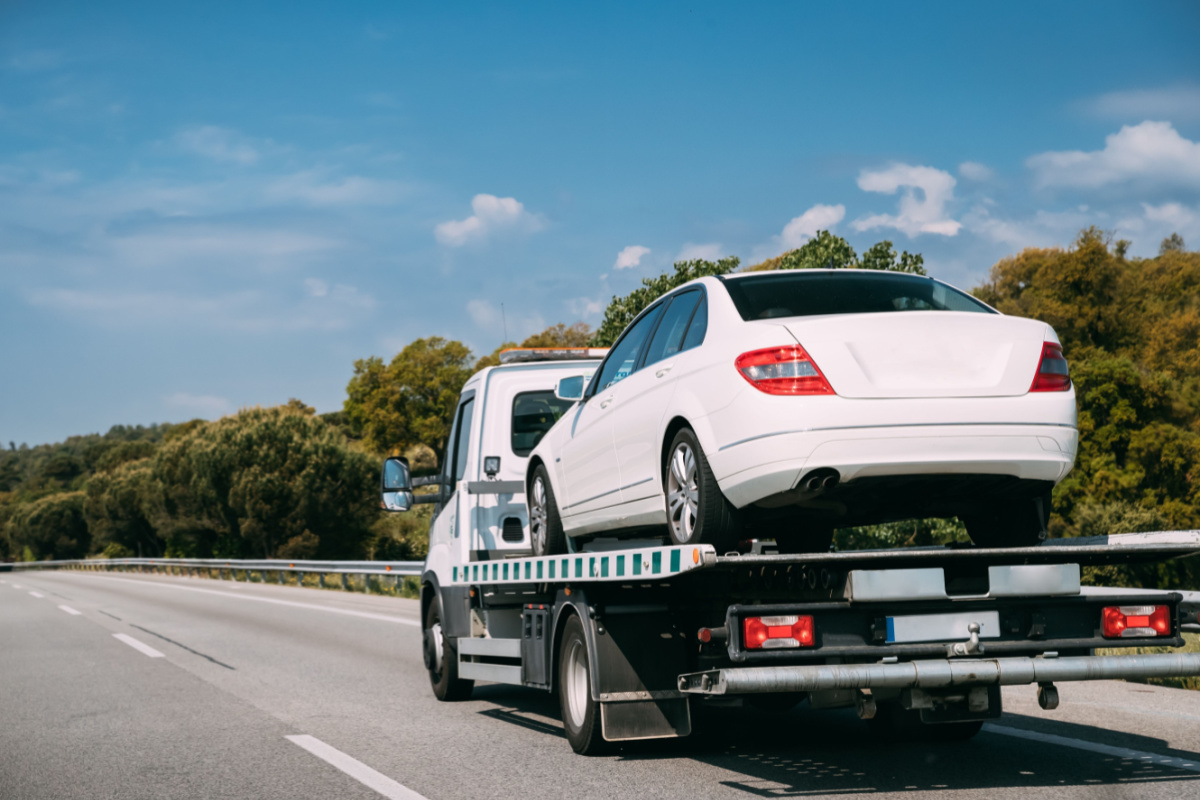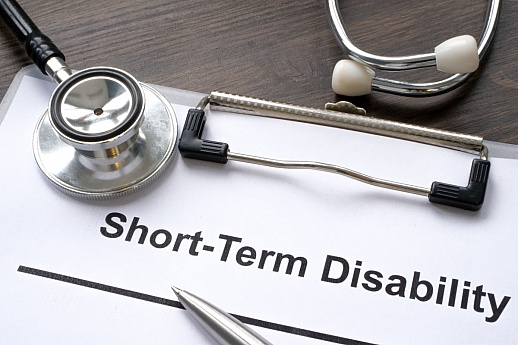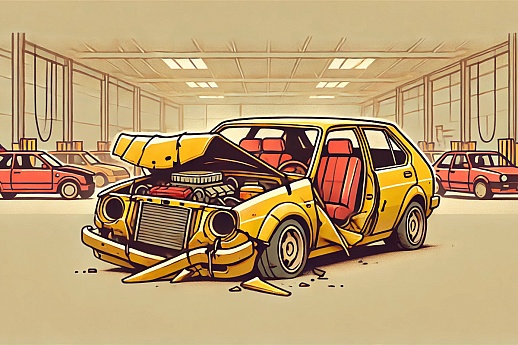Types of Car Insurance Policies and Coverages Explained
When it comes to insuring your car, various options are available to you. From liability coverage to comprehensive plans, each type of car insurance offers a unique level of protection and has advantages and disadvantages. With so many choices, it can take time to determine which policy is right for you. In this blog, we'll take a closer look at the different types of car insurance and help you decide on the coverage you may need.
What Are the Main Types of Car Insurance?
There are different types of car insurance coverage, each providing a specific kind of protection. However, the most demanded types of car insurance are liability, collision, and comprehensive insurance coverage. Below are the explanations of each coverage option:
Liability Insurance
Liability-only car insurance is mandatory in every state except New Hampshire. It can help to protect you financially if you’re at fault in a car accident. Auto liability coverage has two components:
- Bodily injury liability coverage helps pay for costs related to another person’s injuries when you’re at fault for the accident.
- Property damage liability coverage helps pay for the damage to another person’s vehicle and property when you’re at fault behind the wheel.
Each state sets its own minimum coverage limit, and drivers are legally required to carry at least the minimum liability set by state law. However, you can increase your auto liability limits above the state’s minimum requirements for added protection to decrease out-of-pocket expenses.
The average cost of liability coverage is around $1,000 per year.
Collision Insurance
Collision insurance can help pay to repair or replace your vehicle if it is damaged or destroyed in an accident. It includes colliding with another car or an object like a fence or a tree.
Unlike liability coverage, collision coverage is optional. However, you may need it if you’re leasing or financing your car. Even when you have paid off your vehicle, you may want to retain the coverage on your insurance policy for added peace of mind, especially if you can’t afford to repair or buy a new car after an accident.

Collision insurance coverage has a deductible, which is the amount you pay out of pocket before your coverage helps pay for your claim. Let's say you have collision coverage on your car insurance policy with a deductible of $1,000. If you get into an accident and the cost to repair your car is $5,000, you will be responsible for paying the first $1,000, and your insurance company will cover the remaining $4,000.
Typically, you can choose the amount of your collision deductible when buying coverage. Here are some standard deductible ranges for collision coverage:
- $250 deductible: This is a relatively low deductible, meaning you would be responsible for paying the first $250 of any repair costs before your insurance coverage kicks in. This option will likely come with higher monthly premiums.
- $500 deductible: This is a mid-range deductible, meaning you would be responsible for paying the first $500 of any repair costs before your insurance coverage kicks in. This option balances lower premiums and manageable out-of-pocket expenses if you need to file a claim.
- $1,000 deductible: This is a high deductible, meaning you would be responsible for paying the first $1,000 of any repair costs before your insurance coverage kicks in. This option can result in lower premiums, but you should be prepared to pay a significant amount out of pocket if you need to file a claim.
The average cost of collision coverage ranges between $622 and $2,014 per year. At the same time, collision coverage has a limit. The maximum amount your insurance policy will pay toward a covered claim is typically the actual cash value of your vehicle. So, if your car is wrecked during a collision, your insurer will give you a check for your car’s current market value minus your deductible.
For example, suppose you have collision coverage on your car insurance policy with a limit of $10,000, and you get into an accident with $12,000 in damages. Since your collision coverage limit is $10,000, your insurance company will pay up to that amount to cover the cost of repairs.
In this case, you would pay the remaining $2,000 out of pocket. However, if the cost of repairs were only $8,000, your insurance company would cover the entire amount since it falls within your collision coverage limit.
Comprehensive Insurance
Comprehensive insurance helps cover the costs of replacing or repairing your vehicle if it is stolen or damaged in an accident that is not a collision. Examples of damages include theft, vandalism, fire, natural disasters, falling objects, civil disturbance, and even damage done by animals.
Comprehensive coverage is typically optional. However, you may be required to obtain comprehensive coverage if you lease your vehicle. Even if you have paid off all your car payments, you may want to consider keeping comprehensive insurance for extra protection, especially if you live in a state prone to natural disasters like hurricanes.
Like collision insurance, comprehensive insurance has a deductible. However, it also has a limit, which is the actual cash value of your car. For example, suppose you have a comprehensive insurance policy with a $1,000 deductible and a coverage limit of $20,000. Then, one day, a hailstorm damages your car, causing $8,000 in damages.
Since you have a $1,000 deductible, you will pay that amount out of pocket before your insurance kicks in. After you pay your deductible, your insurance company will cover the remaining $7,000 of the repair costs up to your policy's coverage limit of $20,000.
However, if the cost of repairs were more than $20,000, your insurance company would only pay up to that limit. Therefore, you would be responsible for paying any additional costs out of pocket.
The average cost of comprehensive insurance ranges from around $300 to $400 annually.
Additional Types of Car Insurance Coverage
Some drivers opt for additional coverage to provide extra protection to themselves, their passengers, their vehicles, and other drivers. Below are some optional coverages that can help you in unexpected situations:
Uninsured and Underinsured Motorist Coverage
In some states, uninsured and underinsured motorist coverages are bundled as a single option on your auto policy.
Uninsured motorist coverage protects you if you’re hit by a driver who doesn’t carry liability insurance to pay for your medical bills or repairs to your vehicle. Meanwhile, underinsured motorist coverage protects you if an at-fault driver hits you with car insurance, but their liability limits aren’t enough to cover the damages they have caused.

Like liability insurance, uninsured and underinsured motorist coverage has two components: bodily injury and property damage.
- Uninsured and underinsured motorist bodily injury coverage takes care of your medical expenses and lost salary if you’re in an accident with an at-fault driver who doesn’t have insurance or enough insurance.
- Uninsured and underinsured motorist property damage coverage helps protect your car if a driver hits you and doesn’t have insurance or enough insurance to pay for vehicle repairs.
In some states like Illinois and Missouri, these coverages are required by law and automatically included in your policy. On the other hand, other states like California and Texas do not require uninsured and underinsured motorist coverage.
Personal Injury Protection
Personal injury protection helps pay for your and your passenger’s medical expenses, regardless of who is at fault during the accident. It may also cover other expenses incurred because your health insurance company does not cover your injuries. Examples may include lost wages, funeral expenses, and childcare expenses.
Personal injury protection is required in some states and optional in others. For instance, Delaware, Florida, Hawaii, Kansas, Kentucky, Massachusetts, Michigan, Minnesota, New Jersey, New York, North Dakota, Oregon, and Utah require personal injury protection coverage. The cost typically ranges between $100 to $400.
If you live in one of those states and already have health insurance with excellent post-accident benefits, the lowest legally required personal injury protection limit may be enough. On the other hand, if you’d like to benefit from additional protection, like lost wages and other expenses, you can increase your limits to meet your needs. Getting as much personal injury protection coverage as possible might be in your best interest if you don’t have health insurance.
Medical Payments Coverage
Like personal injury protection, medical payments coverage helps pay your or your passenger’s medical expenses in a car accident, regardless of who caused the accident. Examples include doctor or hospital visits, surgeries, x-rays, and ambulance fees.
Medical payment coverage is entirely optional and only available in states that do not have personal injury protection. In addition, unlike personal injury protection, it doesn’t cover expenses like lost wages or childcare due to injuries after a car accident.
Like any other insurance policy, medical payment coverage has a limit. You can choose your limit when you buy your coverage. The limitations of Medical Payment coverage can vary depending on your car insurance policy and state laws. Generally, it can range from a few thousand dollars to tens of thousands of dollars.
To determine the specific limits of your Medical Payments coverage, you should review your car insurance policy or contact your insurance provider directly. In addition, reviewing your health insurance policy to understand your coverage for medical expenses related to car accidents is also a good idea.
Remember that you will have to pay out of pocket if any medical expense exceeds your coverage limit. To select your coverage limit, consider the cost of short-term emergency expenses you may incur after a car accident.
Gap Insurance
Gap insurance helps pay the difference between the amount owed on a car loan and the car's actual cash value if the vehicle is stolen or totaled in an accident. It typically costs between $50 and $250 per year.
When a person buys a car, the car's value starts depreciating immediately, which means that the car's actual cash value will decrease faster than the loan balance. In case of an accident, if the vehicle is deemed a total loss, the insurance company will pay out the car's actual cash value, which may be lower than the outstanding loan balance. In such a situation, gap insurance can help pay the difference between the two amounts.
Gap insurance is typically recommended for people who have financed their cars with a loan or lease, as they have a higher risk of owning more than the car's actual cash value in the event of an accident. However, it can also be helpful for people who put a small down payment on their vehicle or have a long-term loan.
Car Towing Coverage
Car towing coverage can be added to your car insurance policy to protect against the costs and hassles of common roadside breakdowns. Services may include towing, jump starts, tire changes, lockout assistance, and gas delivery.
Some insurers may require comprehensive or collision coverage before adding car towing coverage to your policy. As with most insurance coverage, you will be subject to limits and caps on the cost of each incident or the number of claims filed each year.

The limits of car towing coverage vary depending on your insurance company and policy. Some common limitations are:
- Distance: Most car towing coverage has a limit on the distance your vehicle can be towed. The limit may range from a few miles to several hundred miles.
- Type of tow: Some policies may limit the type of tow that is covered. For example, they may only cover a standard tow and not cover winching or extrication from mud, sand, or snow.
- Number of tows: Some policies may limit the number of times you can use your towing coverage within a given time period, such as a year.
- Location: Some policies may only cover towing within a specific geographic area, so you may not be covered if you travel outside that area.
- Reason for the tow: Some policies may only cover towing in certain situations, such as a breakdown or accident, and not for other reasons, such as running out of gas or getting a flat tire.
Car towing coverage can offer comfort when you have to call for help. However, make sure to practice regular car maintenance and seasonal driving precautions to decrease the chances of ending up in an unwanted situation.
Rental Car Reimbursement
Rental car reimbursement coverage helps pay for transportation expenses while your car is being repaired after a covered insurance claim. Drivers can typically choose where to rent a vehicle; however, some insurers will have partnered with specific rental car companies. In such cases, the rental company may directly bill your insurance company so you don’t pay out of pocket. If not, you will likely pay upfront and request reimbursement from your insurer.
Rental car reimbursement is optional coverage on a car insurance policy. It has a daily limit and a maximum number of days it can be used. If you exceed the limits, you will pay out of pocket. Also, keep in mind that certain expenses, like the cost of gas, will typically not be included in your coverage.
The daily limit and the maximum number of days for rental car reimbursement insurance can vary depending on the insurance policy and provider. Some insurance policies may have a daily limit on the amount of rental car reimbursement coverage, such as $30 or $50 per day. Other policies may offer unlimited daily coverage for rental cars.
The maximum number of days for rental car reimbursement insurance can also vary depending on the policy and the provider. For instance, some policies may have a maximum limit of 30 days or less, while others may offer coverage for up to 60 days or more.
The annual cost of adding rental reimbursement to your policy typically costs between $24 and $180.
Ridesharing Coverage
Ridesharing coverage is designed for people who drive for ridesharing companies like Uber and Lyft. Typically, a personal car insurance policy doesn’t cover expenses relating to the “business use” of your vehicle. As a result, you could pay out of pocket for vehicle repairs or passengers’ medical bills while on the clock.

Most ride-share companies are required by law to provide driver insurance. However, if you use your car for personal and business purposes, consider adding ridesharing coverage to help protect it.
This type of insurance typically costs between $72 to $360 annually.
Bottom Line
Understanding the different types of car insurance policies is essential for every car owner. By knowing what each policy covers and the limits, deductibles, and premiums, you can make an informed decision about the coverage that meets your specific needs and budget.
When choosing an insurance policy, consider the level of protection you require and your financial situation. With the right coverage, you can drive confidently, knowing that you and your vehicle are protected in case of an accident or other covered events.
Finally, remember to regularly review your policy to ensure that it continues to meet your changing needs and to stay up to date with any changes in insurance regulations or laws that may affect your coverage.
Car Insurance Types FAQ
If you’re still looking for more information on different types of car insurance coverage, take a look at the following commonly asked questions:
What Type of Car Insurance Coverage Do I Need?
The type of car insurance coverage you need depends on various factors, such as your state's minimum requirements, budget, driving record, age, and gender. However, you should consider three main types of car insurance coverage: liability, collision, and comprehensive insurance.
You can always add additional types of coverage to your policy, such as uninsured or underinsured motorist coverage, personal injury protection, and roadside assistance. It's best to speak with your insurance provider to determine which coverage options suit your needs.
Can I Stack Multiple Insurance Policies?
It is generally not possible to stack multiple car insurance policies to double up on coverage for the same vehicle. Insurance companies typically include a clause that prevents policyholders from receiving duplicate benefits for the same claim. This is because allowing multiple policies to cover the same loss could lead to fraud or over-insurance, resulting in a financial loss for the insurance company.
However, it may be possible to stack policies in certain circumstances. For example, suppose you have two different policies with different coverage types and limits. In that case, you may be able to use one policy to cover certain expenses and the other policy to cover additional costs. In such cases, you would need to carefully review the terms and conditions of each policy to determine if stacking is possible and if there are any exclusions or limitations.
It's a good idea to speak with your insurance provider to better understand your policy and how it works. They can provide you with more information on whether or not you can stack your policies and, if so, under what circumstances.
How to Search for Car Policies Online?
Searching for car insurance policies online can be an easy and convenient way to compare and select the best car insurance policy for your needs. Here are some steps to follow:
- Determine your insurance needs: Before you search, decide what type of coverage you need. This may depend on factors such as the make and model of your car, your driving history, and your budget.
- Research insurance companies: Research different insurance companies to find policies that meet your needs. You can use search engines or insurance comparison websites to get a list of insurance providers.
- Compare policies: Once you have a list of potential insurers, compare their policies to find the one that offers the best coverage at a price you can afford. You can use TrySmartly to search for different policy options from top providers.
- Check the policy details: Read the details carefully before making a final decision. Check for any exclusions, limitations, or deductibles affecting your coverage.
- Apply online: Once you have selected an insurance policy, you can apply online by filling out the application form on the insurer's website. You may need to provide personal information and details about your car.
- Review the policy documents: After applying, the insurer will email or mail you the policy documents. Review these documents carefully to understand the coverage, terms, and conditions.
What Are the Minimum Car Insurance Coverage Requirements by State?
Here is a breakdown of each state’s minimum coverage requirements:
Additional Coverage Requirements
|
State |
|
Additional Coverage Requirements |
|
Alabama |
|
|
|
Alaska |
|
|
|
Arizona |
|
|
|
Arkansas |
|
|
|
California |
|
|
|
Colorado |
|
|
|
Connecticut |
|
|
|
Delaware |
|
|
|
District of Columbia |
|
|
|
Florida |
|
|
|
Georgia |
|
|
|
Hawaii |
|
|
|
Idaho |
|
|
|
Illinois |
|
|
|
Indiana |
|
|
|
Iowa |
|
|
|
Kansas |
|
|
|
Kentucky |
|
|
|
Louisiana |
|
|
|
Maine |
|
|
|
Maryland |
|
|
|
Massachusetts |
|
|
|
Michigan |
|
|
|
Minnesota |
|
|
|
Mississippi |
|
|
|
Missouri |
|
|
|
Montana |
|
|
|
Nebraska |
|
|
|
Nevada |
|
|
|
New Hampshire |
|
|
|
New Jersey |
|
|
|
New Mexico |
|
|
|
New York |
|
|
|
North Carolina |
|
|
|
North Dakota |
|
|
|
Ohio |
|
|
|
Oklahoma |
|
|
|
Oregon |
|
|
|
Pennsylvania |
|
|
|
Rhode Island |
|
|
|
South Carolina |
|
|
|
Tennessee |
|
|
|
Texas |
|
|
|
Utah |
|
|
|
Vermont |
|
|
|
Virginia |
|
|
|
Washington |
|
|
|
West Virginia |
|
|
|
Wisconsin |
|
|
|
Wyoming |
|
|
Sources
- World Population Review. “State Prone to Natural Disasters Like Hurricanes.” Accessed Aug. 12, 2023.
- Bankrate. “How is the value of my car determined?” Accessed Aug. 12, 2023.
- Allstate. “6 types of car insurance policy coverages.” Accessed Aug. 12, 2023.
- Investopedia. “Personal Injury Protection: What it is, How it Works.” Accessed Aug. 12, 2023.



